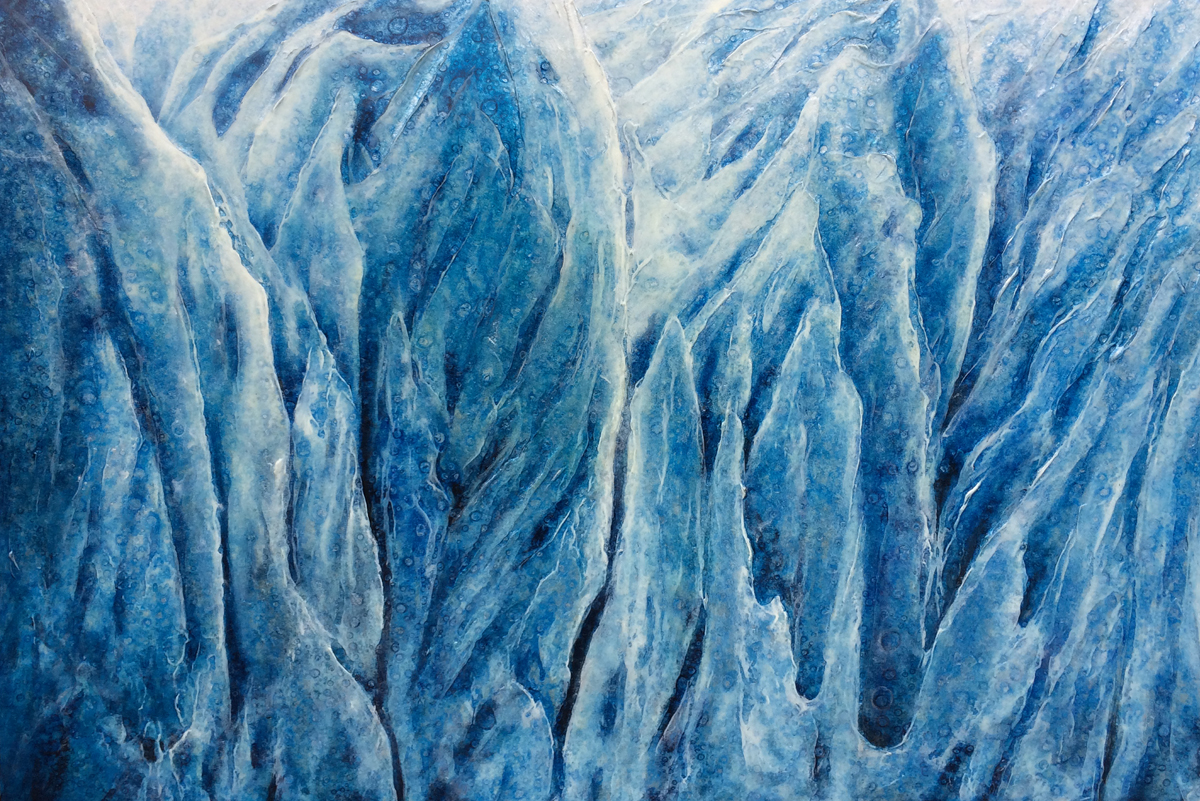As an artist who usually just paints local landscape paintings, I don't usually think about my "world view". Most people don't give their own world view any thought at all but that view affects how we interpret EVERYTHING here on this planet. So, because we want (I assume) to understand art, we really need to consider the world view of the artist so that we can accurately interpret (and maybe even enjoy!) a piece of artwork.
The previous world view we looked at was the "abyss" of Nihilism. Because the ramifications of this view are so dark, it gave way to the next: Existentialism.
I think Existentialism is interesting. In some sense, it is a "softening" of Nihilism. Again, Nihilism asserts that we are all here by chance and in a few billion years when the sun explodes there will be no trace we ever existed and so nothing anyone does ultimately matters at all. In Nihilism, concepts like "fair and unfair", "good and evil", "right and wrong", "meaningful and meaningless" are not based in reality at all and therefore are technically baseless philosophical constructs. The results of a strict nihilistic world view left a lot of people pretty depressed because like it or not, most people intuitively desire some sort of transcendent meaning in life. Human beings like to at least feel like some things really do matter, and nihilism gives no basis for that assertion.
Enter Existentialism
Existentialism showing up on the scene when it did brings to mind an analogy. Imagine the world is at God's funeral -- people everywhere are quiet, weeping, downcast. As the pipe organ is finishing up the dirge, Stephen Colbert steps up to the podium and starts cracking jokes. Soon, everyone is laughing hysterically.
Existentialism is the joke-teller at a funeral.
Existentialism asserts that yes (as per nihilism) there’s no God but…good news! We don’t NEED a God! We’re free! We can do whatever we want! We can be who and what we want.
Existentialism asserts that we’re not accountable or dependant on a grumpy deity out there somewhere. Individuals are free to create the meaning and essence of their lives, as opposed to deities or authorities creating it for them.
In existentialism, like it’s predecesor Nihilism, there is no true truth. There is no right right or wrong wrong. But existentialism deals with our penchant to at least “feel” like there are propositions that are true and false, right and wrong. This world view deals with that “desire for truth” by asserting that a belief can "become" true to you when you act on it. This allows people to basically come up with “boutique truths”, customizable truth for every person on earth.
Let's look at the effects of existentialism on art. The poet, Tom Greening, wrote a poem which I think beautifully captures the ramifications of existentialism on a human life:
No Time to Feel (Tom Greening)
The way that I've arranged my life,
I've left no time to feel.
This anesthetic works so well
I never do reveal
my feelings even to myself
or to those close to me.
By keeping busy all the time
I act like I am free,
and if I have some time to spare
I fill it up real fast,
and pray this numbing sedative
is somehow going to last.
When nosey people question me
I hasten to explain
this is my plan to get through life
by minimizing pain,
and yet at times I lie awake
obsessed by sudden doubt—
I worry that I'm just a fool
and somehow missing out.
I do not hope to really live
but merely to survive,
but will I mourn when I'm near death
not having been alive?
So I have a question. What’s your reaction to this poem?
Next, I’d like also to take a look at a sculpture named “Three Men Walking” by Alberto Giacometti (below)
Take a look at it. What do you notice? Any thoughts?
















